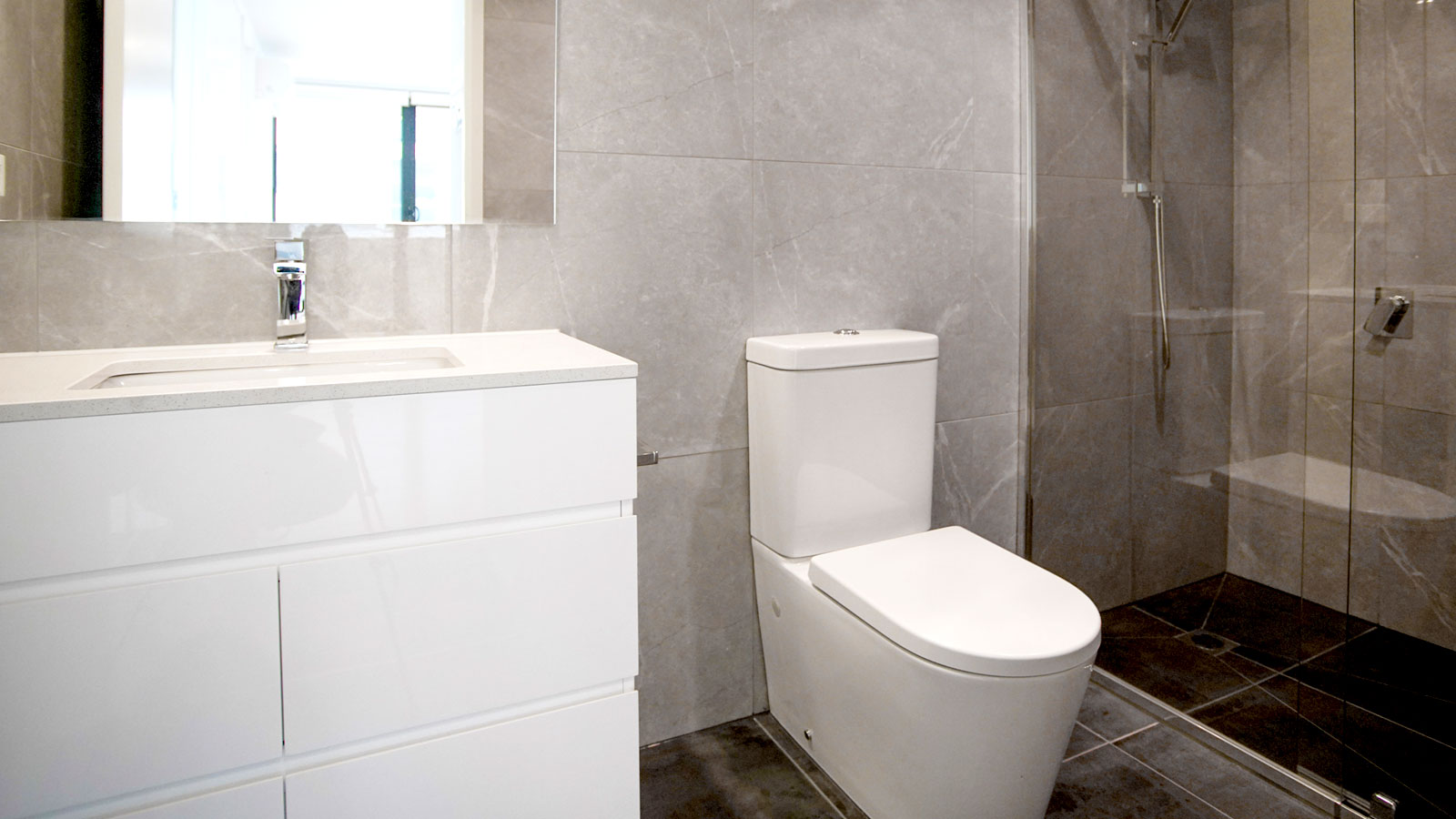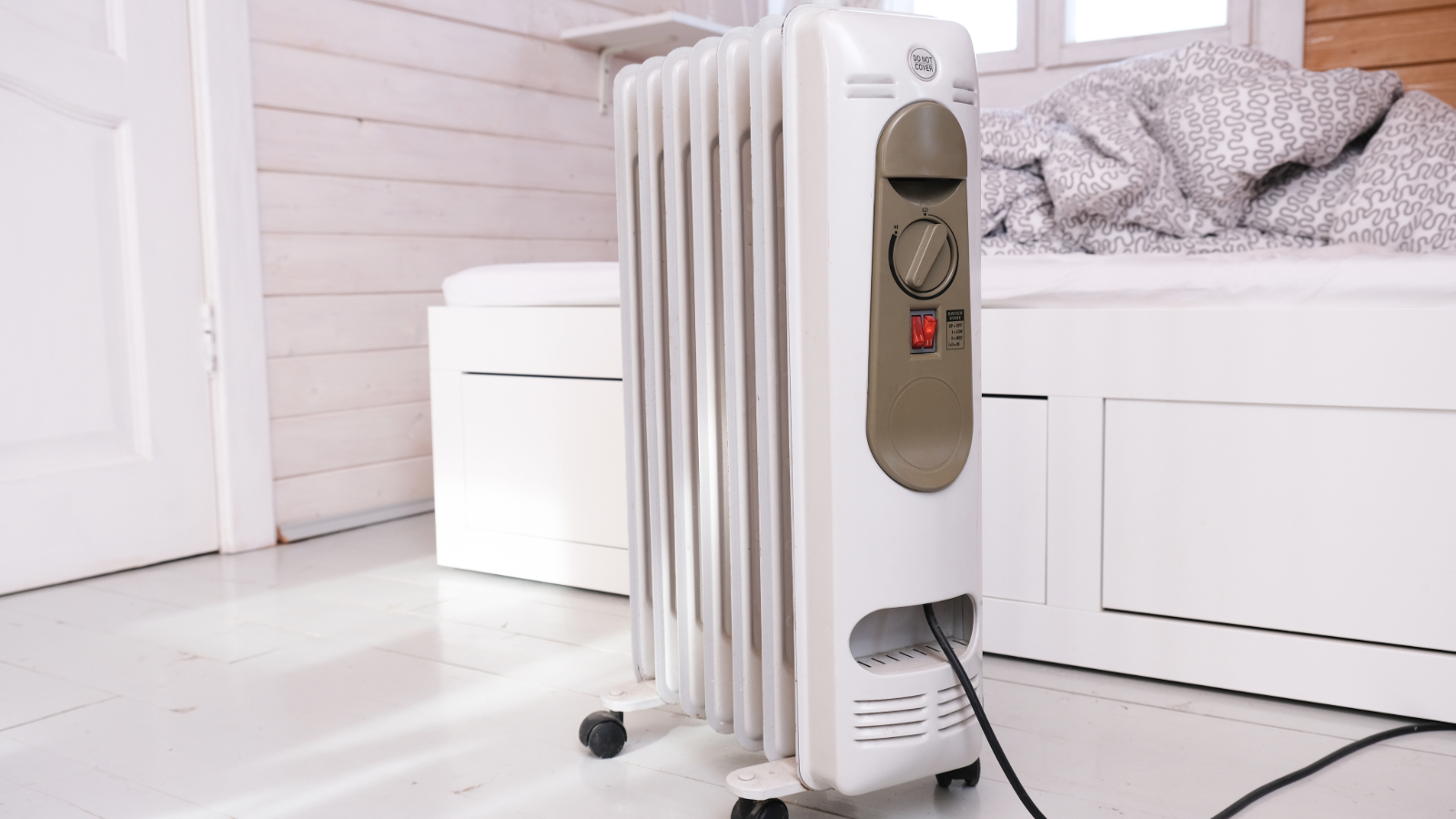What is a closed back toilet and should I choose one?
What is a closed back toilet? Not sure? Here we reveal what they are, what benefits they bring to your home and how much they cost

If you’re asking yourself ‘What is a closed back toilet?’ you are about to find out. One of the most common toilet styles found in today's home is the close coupled toilet, with a closed back toilet being a type of this kind of toilet.
If you’re looking at fitting a new toilet, a closed back toilet is one of the easiest to install, especially if all the plumbing and pipe work is already in place. It's a job that any competent DIYer will be able to tackle.
In this guide you will find out what a closed back toilet is, the benefits they bring and why it could be the perfect type of toilet for your next bathroom makeover.
What is a closed back toilet?
A closed-back toilet is one of the most popular and common types of toilet found in today's homes. The name refers to the fact that the cistern – the tank that holds the water for flushing – is attached to the toilet bowl to create a single sanitary unit. Unlike older toilet designs where the cistern used to be higher up the wall and connected via a long pipe to ensure that gravity helped the toilet flush properly.
With closed-back toilets, the pan and cistern both fit flush to the wall of your bathroom creating a boxy, yet slimline aesthetic." explains Nancy Emery, Bathroom Expert at Drench. "This design neatly hides all those unsightly working parts of the toilet, while the structure allows for easier access and cleaning."
This means you won't see the plumbing i.e. the S-bend (aka S-trap) pipe that leads to the waste pipe to help give a far more pleasing visual.
Closed-back toilets vs close-coupled toilets
A closed-back toilet is actually a type of close-coupled toilet, as the cistern is attached to the bowl.
Bring your dream home to life with expert advice, how to guides and design inspiration. Sign up for our newsletter and get two free tickets to a Homebuilding & Renovating Show near you.
The main difference between the types of close-coupled toilets are that they can be either open-back or closed-back as Emery reveals, "Closed-back is where the pan goes back to the wall hiding pipework, while open back toilets have the pipework exposed at the back."
To make things even more confusing, you can also get fully back to wall close-coupled toilets, which require pipework to go through the wall to save on space, but still have the advantage of having the cistern attached as one unit.
Advantages of closed-back toilets
If you are renovating your bathroom, installing a downstairs toilet or looking at new bathroom remodel ideas, a closed back toilet will be a welcome addition. Here we tell you why.
- Affordable - They are competitively priced with standard close coupled and back to wall toilets commonly offering similar features, but a different aesthetic. Wall hung toilets are typically more expensive than closed back toilets.
- Easy to install - A competent DIYer will be able to install a closed back toilet without too much trouble. The simple design makes the process quick and relatively easy.
- Neat aesthetic - The design of the toilet bowl means that plumbing and pipework are concealed, offering a smooth up to the wall bowl that produces simple clean lines.
- Space saving - The compact design is a space saver allowing for an efficient use of floor and wall space.
"Finally," says Emery, "Because of the enclosed pipework and back to wall pan, it’s easier to access all of its surfaces for spotless cleaning!"
Disadvantages of closed-back toilets
"The main gripe you’ll find with a closed-back toilet is that it’s harder to access the pipework for maintenance should you need to." suggests Emery. "As the design of a closed-back toilet means the pan and cistern are flush to the wall, you will have to remove the entire toilet to access it."
This can make things tricky if you ever get a leak in the flush pipe, or need the pipe to be removed for any reason. That said, this is usually a fairly rare need.
"But, luckily, the cistern is still accessible from the top as with any other close-coupled toilet." continues Emery.
The other main disadvantage to closed-back toilets and having a cistern that is attached to the toilet bowl, is that it can make the toilet harder to clean.
Closed back toilet costs
The prices for closed back toilets can vary greatly depending on quality, features, design and brand. They’re not the cheapest type of toilet on the market, typically being more expensive than standard close coupled toilets, but still competitively priced.
At the lower end of the scale you should expect to pay around £120-£150 for a model like this Orchard Adur close coupled toilet from Victoria Plum. At the other end of the scale you should expect to spend £400-500 for a standard closed back toilet.
If you are on the lookout for a new toilet there are always deals online or in-store. So, make sure to do some research before you buy, as you can save yourself some serious cash. You may have to wait to get what you want, but the savings can make it worth it.
Differences between closed-back and other toilet types
There’s several types of toilets – closed back toilets, close coupled toilets, back to the wall and wall hung. But there are different variations on each of these types and the names are interchangeable, which can lead to a little confusion when looking to purchase a toilet.
While closed back toilets include the cistern and piping as one unit, back to the wall toilets are designed so the toilet bowl fits against the floor and wall with the pipework hidden for a tidy modern finish. Meanwhile a wall hung toilet is hung on a hidden frame above the floor with only the toilet bowl on display. This makes them easier to clean and gives the illusion of space.
Renovating your bathroom? Check out our 24 Modern Bathroom Ideas guide for inspiration. Installing a new ground floor toilet? Our Downstairs Toilet Ideas are here to help.
Steve Jenkins is a freelance content creator with over two decades of experience working in digital and print and was previously the DIY content editor for Homebuilding & Renovating.
He is a keen DIYer with over 20 years of experience in transforming and renovating the many homes he has lived in. He specialises in painting and decorating, but has a wide range of skills gleaned from working in the building trade for around 10 years and spending time at night school learning how to plaster and plumb.
He has fitted kitchens, tiled bathrooms and kitchens, laid many floors, built partition walls, plastered walls, plumbed in bathrooms, worked on loft conversions and much more. And when he's not sure how to tackle a DIY project he has a wide network of friends – including plumbers, gas engineers, tilers, carpenters, painters and decorators, electricians and builders – in the trade to call upon.

